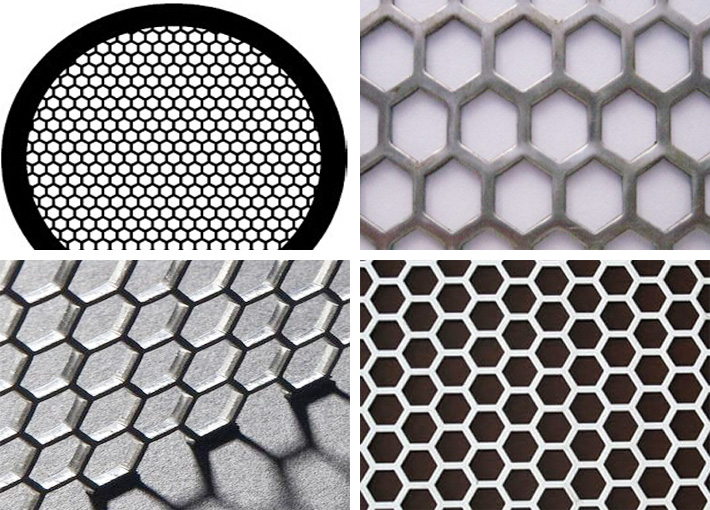
Name:hexagon hole
Stainless steel perforated sheet
Stainless steels are defined as ferrous alloys with the addition of at least 10.5% chromium by weight and are essentially low carbon steels containing significant amounts of chromium. It is the addition of chromium that gives this type of steel its corrosion resisting properties.
The chromium content of the steel allows the formation of an invisible corrosion resistant chromium oxide film on the steel surface. If damaged mechanically or chemically this film is self-healing providing that oxygen, even in very small amounts, is present. The corrosion resistance of stainless steel can be enhanced along with providing other useful properties by increasing the chromium content and by adding other elements such as molybdenum, nickel, and nitrogen.
Stainless steel plate is used for a huge variety of applications in many diverse industries including nuclear, pharmaceutical, food processing, petrochemical, architecture, and chemical transportation.
Stainless steels are defined as ferrous alloys with the addition of at least 10.5% chromium by weight and are essentially low carbon steels containing significant amounts of chromium. It is the addition of chromium that gives this type of steel its corrosion resisting properties.
The chromium content of the steel allows the formation of an invisible corrosion resistant chromium oxide film on the steel surface. If damaged mechanically or chemically this film is self-healing providing that oxygen, even in very small amounts, is present. The corrosion resistance of stainless steel can be enhanced along with providing other useful properties by increasing the chromium content and by adding other elements such as molybdenum, nickel, and nitrogen.
Stainless steel plate is used for a huge variety of applications in many diverse industries including nuclear, pharmaceutical, food processing, petrochemical, architecture, and chemical transportation.










